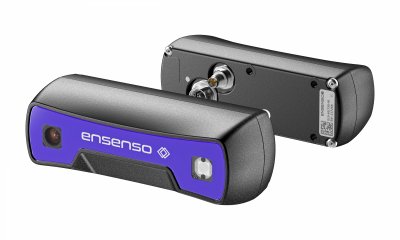With a system that uses both 2D and 3D cameras from IDS Imaging Development Systems GmbH, the young entrepreneurs are automating one of the last remaining manual steps in large-scale industrial laundries, the unfolding process.
 Intelligent Robotics for Laundries Closes Automation Gap
Intelligent Robotics for Laundries Closes Automation Gap

Case Study from | IDS Imaging
The textile and garment industry is facing major challenges with current supply chain and energy issues. The future recovery is also threatened by factors that hinder production, such as labor and equipment shortages, which put them under additional pressure. The competitiveness of the industry, especially in a global context, depends on how affected companies respond to these framework conditions. One solution is to move the production of clothing back to Europe in an economically viable way. Shorter transport routes and the associated significant savings in transport costs and greenhouse gases speak in favor of this. On the other hand, the related higher wage costs and the prevailing shortage of skilled workers in this country must be compensated. The latter requires further automation of textile processing. The German deep-tech start-up sewts GmbH from Munich has focused on the great potential that lies in this task. It develops solutions with the help of which robots - similar to humans - anticipate how a textile will behave and adapt their movement accordingly.
The German deep-tech start-up sewts GmbH from Munich has focused on the great potential that lies in this task. It develops solutions with the help of which robots - similar to humans - anticipate how a textile will behave and adapt their movement accordingly. In the first step, sewts has set its sights on an application for large industrial laundries. With a system that uses both 2D and 3D cameras from IDS Imaging Development Systems GmbH, the young entrepreneurs are automating one of the last remaining manual steps in large-scale industrial laundries, the unfolding process. Although 90% of the process steps in industrial washing are already automated, the remaining manual operations account for 30% of labor costs. The potential savings through automation are therefore enormous at this point.
Application
It is true that industrial laundries already operate in a highly automated environment to handle the large volumes of laundry. Among other things, the folding of laundry is done by machines. However, each of these machines usually requires an employee to manually spread out the laundry and feed it without creases. This monotonous and strenuous loading of the folding machines has a disproportionate effect on personnel costs. In addition, qualified staff is difficult to find, which often has an impact on the capacity utilization and thus the profitability of industrial laundries. The seasonal nature of the business also requires a high degree of flexibility. sewts makes IDS cameras the image processing components of a new type of intelligent system whose technology can now be used to automate individual steps, such as sorting dirty textiles or inserting laundry into folding machines.
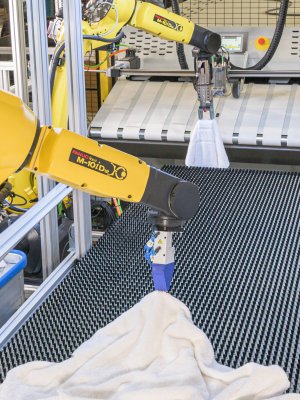
"The particular challenge here is the malleability of the textiles," explains Tim Doerks, co-founder and CTO. While the automation of the processing of solid materials, such as metals, is comparatively unproblematic with the help of robotics and AI solutions, available software solutions and conventional image processing often still have their limits when it comes to easily deformable materials. Accordingly, commercially available robots and gripping systems have so far only been able to perform such simple operations as gripping a towel or piece of clothing inadequately. But the sewts system VELUM can provide this. With the help of intelligent software and easy-to-integrate IDS cameras, it is able to analyze dimensionally unstable materials such as textiles. Thanks to the new technology, robots can predict the behavior of these materials during gripping in real time. It empowers VELUM to feed towels and similar linen made of terry cloth easily and crease-free into existing folding machines, thus closing a cost-sensitive automation gap.
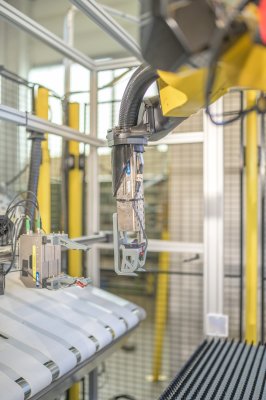
The software suite developed by sewts combines commercially available robots, grippers and cameras into an intelligent system. In the search for the right camera modules, several criteria were decisive for the Munich-based company in addition to uncompromising industrial suitability: "We need a 3D camera that is cost-effective because we use two to three 3D cameras depending on the system configuration. In addition, it must above all ensure high accuracy of the depth data," explains Tim Doerks.
"Beyond that, we need 2D cameras that are light sensitive, deliver high dynamic range and are suitable for use in a multi-camera system." The founders found what they were looking for in the IDS portfolio: For the VELUM multi-camera system, the choice fell on the new Ensenso S10 3D camera as well as models from the uEye CP camera series. Their task is to identify, both in 2D and 3D, interesting features and gripping points of the textiles that are fed into the system after washing and drying in an unordered manner in a container or on a conveyor belt. The shape and position of the individual objects cannot be predicted. The cameras capture the different textures of the materials. They distinguish which hems there are on a towel and where corners are.
We match the images from the 2D and 3D cameras to have a higher 2D resolution together with the 3D data. So we use the respective advantages of the 2D camera, in this case the higher resolution, and the 3D camera, i.e. the precise depth data”, Tim Doerks, co-founder and CTO at sewts mentiones. Equipped with a 1.6 MP Sony sensor, the Ensenso S10 uses a 3D process based on structured light: A narrow-band infrared laser projector produces a high-contrast dot pattern even on objects with difficult surfaces or in dimly lit environments. Each image captured by the 1.6 MP Sony sensor provides a complete point cloud with up to 85,000 depth points. Artificial intelligence enables reliable assignment of the laser points found to the hard-coded positions of the projection. This results in the robust 3D data with the necessary depth accuracy, from which VELUM extracts the coordinates for the gripping points.
The complementary GV-5280CP-C-HQ industrial camera with GigE Vision firmware is equipped with Sony's IMX264 2/3" global shutter CMOS sensor. It delivers near-noise-free, high-contrast 5 MP images in 5:4 format at 22 fps at full GigE speed in applications with fluctuating lighting conditions. The uEye CP camera offers maximum functionality with extensive pixel pre-processing and is perfect for multi-camera systems thanks to the internal 120 MB image memory for buffering image sequences. At around 50 g, the small magnesium housing is as light as it is robust and predestines the camera for space-critical applications and for use on robot arms.
Software
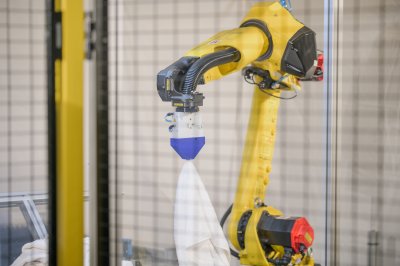
Depending on customer requirements or configuration, two to three uEye 2D or Ensenso 3D cameras are used - both models can be seamlessly integrated into VELUM. "We are experts in preparing the generated data, which is especially important when working with 3D point clouds. This pre-processing is an important component of our systems in order to generate suitable input for our artificial intelligence," Tim Doerks emphasizes. The AI developed by sewts processes the data supplied by the uEye CP or Ensenso S cameras. The intelligent software analyses the topology of the textiles using features such as the course of the seam, local elevations or the relative position of seams, classifies them according to textile type and class using various textures and embroidery patterns and translates these findings into robot commands.
The data is processed via Convolutional Neural Networks (CNN) and classical image processing. "We use IDS peak, the software development kit from IDS. We connect to our system via Python and the IDS Library," reveals Till Rickert, co-founder and CPO of sewts. "The added value of the IDS software package for us lies primarily in the ease of calibration and integration into our High Tech Vision System," he continues.
"AI is at the core of our technology. Intelligent algorithms are needed to build adaptive systems that can cope with non-deterministic automation processes. That's why we use the latest findings from AI research, refine them for our needs and finally put them together into a big whole," adds Till Rickert. It receives various sensor data (e.g. optical information), draws conclusions from them on a human-like cognitive level and translates them into robot commands. In this way, systems like VELUM perform tasks that previously required the human mind. This is exactly what sewts' corporate philosophy is all about: "Our goal is to transform complex manual work into smooth automation".
Outlook
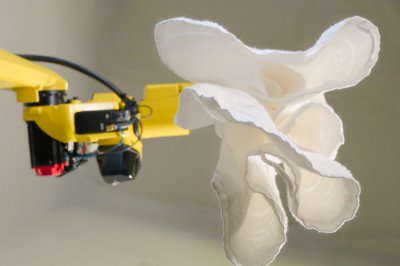
With systems like VELUM, laundries can significantly increase their throughput regardless of the staffing situation and thus increase their profitability. "By closing this significant automation gap, we can almost double the productivity of a textile washing line," assures CEO Alexander Bley.
IDS cameras can also be used for clothing such as shirts and trousers in the future. "It is important to understand the properties of these materials in order to implement robust processes. We achieve this through sophisticated material simulations. In order to simulate the behavior of textiles, we create special FE simulations using the finite element method," explains Alexander Bley. But the Munich-based company has an overarching vision: "We want to make it possible to automate the production of clothing and move it back to the point of use in a cost-efficient way. In this way, we shorten transport distances, create more reliable supply chains, save CO2 emissions and combat the problem of overproduction." Additionally applications with materials that are not textiles are also planned for the future.
There are many potential use cases for technologies like these, and image processing will always play a significant role. Artificial intelligence will accelerate this development.
Cameras
Ensenso S: 3D laser point triangulation with artificial intelligence
-Ultra-compact and cost-efficient
-High 3D data rate and accuracy through AI support
-Robust 3D data even in low ambient lighting
-Structured light with AI-based laser dot pattern triangulation
-Suitable for applications in logistics automation, robot vision, obstacle detection, monitoring and horticultural automation, etc.
Incredibly fast, incredibly reliable, incredible sensors: The uEye CP
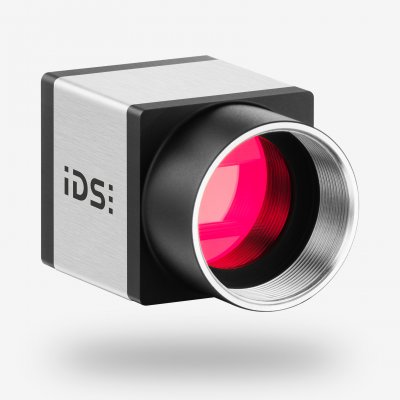
-Interface: Ethernet
-Model: GV-5280CP-C-HQ
-Sensortyp: CMOS
-Sensor type: CMOS
-Manufacturer: Sony
-Frame rate: 24.0 fps
-Resolution (h x v): 2448 x 2048
-Shutter: Global Shutter
-Resolution: 5.01 MPixel
-Dimensions: 29 x 29 x 29 mm
-Weight: 52 g
-Connector: GigE RJ46, screwable
-Applications: e.g. industrial image processing, mechanical engineering, surface inspection, medical technology, traffic & transport, quality assurance, etc.
Client
Founded in 2019, Munich-based sewts GmbH is a provider of innovative control and image processing software that pushes the boundaries of robotics when processing easily deformable materials. sewts has developed a unique technology that uses high-precision finite element method (FEM) simulations to efficiently train machine learning algorithms. The intelligent software solution enables countless applications in industrial automation, such as the processing of textiles in industrial laundries or the production of clothing, but also the handling of foils, cables, deformable plastic parts and many more. www.sewts.com
The content & opinions in this article are the author’s and do not necessarily represent the views of RoboticsTomorrow

IDS Imaging Development Systems Inc.
World-class image processing and industrial cameras "Made in Germany". Machine vision systems from IDS are powerful and easy to use. IDS is a leading provider of area scan cameras with USB and GigE interfaces, 3D industrial cameras and industrial cameras with artificial intelligence. Industrial monitoring cameras with streaming and event recording complete the portfolio. One of IDS's key strengths is customized solutions. An experienced project team of hardware and software developers makes almost anything technically possible to meet individual specifications - from custom design and PCB electronics to specific connector configurations. Whether in an industrial or non-industrial setting: IDS cameras and sensors assist companies worldwide in optimizing processes, ensuring quality, driving research, conserving raw materials, and serving people. They provide reliability, efficiency and flexibility for your application.
Other Articles
2D cameras for positioning and inspecting ultra-fine wires in semiconductor production
Picking the right chart - (Semi-)Autonomous surface and underwater mapping for rivers and lakes
Pallet by pallet - Intelligent robotic vision system destacks up to 800 objects per hour
More about IDS Imaging Development Systems Inc.
Comments (0)
This post does not have any comments. Be the first to leave a comment below.
Featured Product


